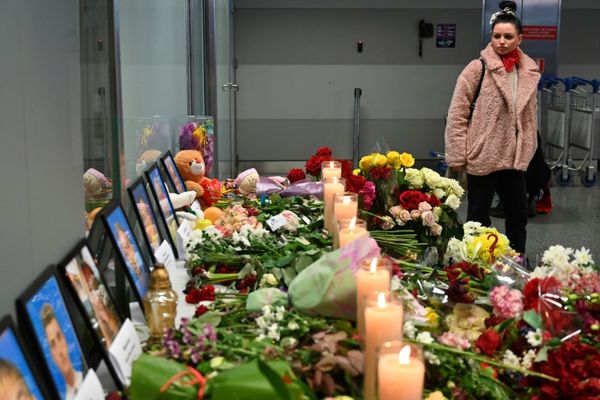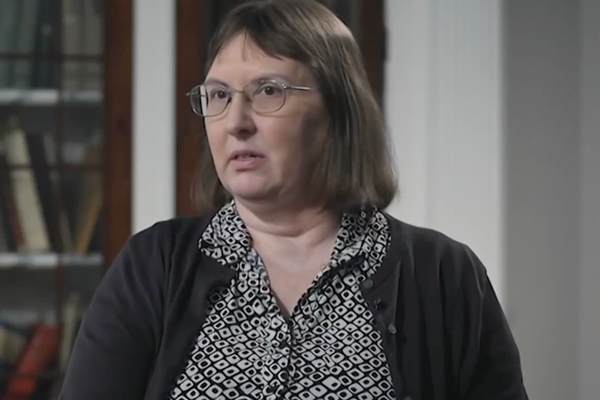
Some witnesses made tearful apologies; others defiantly denied fault. After six weeks of hearings at the UK Covid-19 public inquiry, the evidence about the UK’s preparedness for the Covid pandemic is in.
The nation was caught badly off guard. That much was probably obvious. By 1 March 2021 the UK had suffered more than 180 Covid deaths per 100,000 people; in South Korea, the number was just three. But after hearing the evidence, the bereaved families put it bluntly: we were “catastrophically unprepared”.
The inquiry chair, Lady Hallett, wanted to know why. After all, the pandemic “changed lives on a scale unseen in modern history”, said her lead counsel, Hugo Keith KC.
There was ample evidence the UK had been made more vulnerable by the twin storms of austerity and Brexit. George Osborne strongly denied the former (“Most certainly not. I completely reject that”) while the pro-Brexit Michael Gove claimed Whitehall’s pre-Covid focus on a no-deal EU exit that meant pandemic planning was halted had actually made the country “match-fit” for the pandemic. There was a strong whiff of old battles still raging and the defence of legacies.
Did the sheer churn of government, with its revolving cast of ministers and mandarins, leave responsibility for resilience far too scattered? Judging by the organogram of the UK’s pandemic preparedness and response structures that was repeatedly flashed on the inquiry room screens, yes. It was so bewildering it became known as the “bowl of spaghetti” chart.
But first came a more fundamental question: had we planned for the “wrong pandemic”?
‘A flawed doctrine’
The UK had a plan for pandemic flu because it topped the national risk register. The fear was it would sweep through the country killing 800,000 people. It wasn’t transferable largely because flu carriers tend to be symptomatic and so know when to isolate. With Covid-19 and Sars (which had struck east Asia in 2002-4) asymptomatic transmission makes mass testing vital to stopping it.
Such emerging threats were further down the list, and the national plan, set out in 2011, was specifically for pandemic influenza. The thinking was that flu wouldn’t be stopped in its tracks. Morgue capacity and economic resilience, rather than Test and trace, were on the agenda. There was no planning for lockdowns or quarantine.
This was a “flawed doctrine”, said Matt Hancock, health secretary from July 2018 to June 2021. “Instead of a strategy for preventing a pandemic having a disastrous effect, it is a strategy for dealing with the disastrous effect of a pandemic.”
So why didn’t he do anything to change it? When Hancock became health secretary he was informed of stockpiles of anti-viral drugs for flu but not a non-influenza pandemic. Couldn’t he have pressed civil servants to order them?
“This was an unprecedented pandemic … nobody was to know,” he said. Obesity was the number one issue, he was told. And anyway, he was assured, UK pandemic preparedness was “one of the best in the world”.
The national risk assessment had identified in 2019 a “moderate” risk of a “catastrophic” but containable outbreak of an emerging respiratory coronavirus infection in the UK, but thought it would only kill 2,000 people. They were “hopelessly wrong”, said Pete Weatherby KC, representing families of many of the UK’s 228,492 Covid victims.
This was not to say flu wasn’t a real danger, stressed Prof Dame Sally Davies, chief medical officer from 2010 to 2019.
“The question is what else we do over and above that,” she said. “Clearly we could have done more thinking”.
Several witnesses called for a generic plan for a viral pandemic that could be flexed depending on the threat at hand. But “groupthink” gripped the political and health establishment. The mantra was: “ready for flu, ready for anything”, said Sir Chris Wormald, permanent secretary at the Department of Health and Social Care (DHSC).
Oliver Letwin, the minister in charge of national resilience from 2011 to 2016, didn’t look into the state of pandemic flu planning because he was assured we were “as well prepared to deal with a pandemic flu as any country”. The World Health Organization had also rated the UK’s pandemic plans highly. But this was “simply wrong”, the inquiry heard.
So there was little if any consideration given to the measures such as shielding, employment support, managing disruption to schools, borders and lockdowns.
This was partly because a viral pandemic was framed as a medical, epidemiological problem. Therefore plans lacked focus on “the socioeconomic implications, even though these were well known”, said David Alexander, professor of risk and disaster reduction at University College London.
This brought up the question of how lockdowns were planned for.
“There was a complete lack of imagination about what the public would put up with to keep them safe,” said Hancock. The consensus of behavioural science had been that the public would lack toleration.
Sir Chris Whitty, the chief medical officer, agreed there was a lack of “radicalism” in pre-pandemic thinking, but said it would be “very surprising” for a scientific committee, between emergencies, to suggest a lockdown – an “extraordinarily major social intervention with huge economic and social impact ramifications”. That would need the request of a senior politician.
His predecessor, Davies, also said “no one thought about lockdown” and, visibly emotional, she apologised: “We have damaged a generation and it is awful”.
Cygnus and Alice – the 2016 pandemic exercises
The government took the flu plan for a test drive in 2016 with nearly 1,000 civil servants involved in Exercise Cygnus. The results were bad: “the UK’s current preparedness … is not sufficient to cope with the extreme demands of a severe pandemic”.
But there was secrecy. The full report wasn’t published until October 2020 after a version was leaked to the Guardian. Wormald warned Hancock in June 2020 release could trigger “criticism of our preparedness in a number of areas … such as PPE supply, adult social care”.
A “closed institutional culture” reduced the “challenge to orthodoxies”, lawyers for the bereaved said.
Cygnus resulted in 22 calls for action. But when Covid hit, only eight had been fully addressed by DHSC. Hancock admitted his department had failed to act, but argued the flu plan “wouldn’t have helped much” with Covid and said: “Cygnus did not recommend that we should be prepared to stop the spread of a pandemic”.
It did, however, call for “plans for social care facilities to support clients who are discharged from hospital”. During Covid, difficulties in this area likely contributed to many care home deaths.
The DHSC board, including Davies and Wormald, knew in 2016 that “even a moderate pandemic would overrun the system” and the government’s emergency response function would be “very rapidly overwhelmed” by a major disease outbreak.
It didn’t seem much was done. When civil servant Emma Reed subsequently took charge of emergency preparedness and health protection at the DHSC in 2018, “there was no discussion with me about quarantining” and “no discussion with me about track and trace”.
Chris Whitty, chief medical officer from October 2019 but, before that, chief scientific adviser at the DHSC, said: “we did not give sufficient thought to what we could do to stop in its tracks a pandemic on the scale of Covid”.
“There was a groupthink that we knew this stuff best,” said Jeremy Hunt, health secretary from 2012 to 2018. “There was a sense that, perhaps with the exception of the United States, there wasn’t an enormous amount we could learn from other countries.”
A smaller pandemic wargame in 2016, Exercise Alice, modelled an outbreak of the coronavirus Mers (Middle East respiratory syndrome). The report was “literally the only place” where quarantine and testing were discussed, according to Hunt. But he was not even briefed on it. It had called for a briefing paper on the South Korean outbreak of Mers, “with a view to considering the direct application of their experience and methods to the UK (which included the 17,000 quarantine cases and port of entry screening)”. The recommendations never reached his desk.
Plus the world knew plenty about Sars CoV-1, which killed at least 773 people when there was an epidemic in 2002-4.
Davies said she tried to challenge the “groupthink”.
“Following a visit to Hong Kong where I learned a lot about Sars, I did ask unofficially ‘what about doing a Sars review?’ and was told ‘oh no, it won’t come here’.”
Brexit
When Covid hit, large parts of the civil service – including 70 DHSC staff – had been diverted to Operation Yellowhammer to brace the country for the fallout of a feared no-deal Brexit. Food and medicine supplies were under threat if the UK “crashed out” of the EU.
Sixteen separate pandemic preparation projects were “stopped” or reduced as a result. Planning for a “healthcare surge”, benchmarking the NHS’s preparedness against other nations and a “pandemic influenza strategy refresh” (which was supposed to examine how countries in Asia, such as South Korea, had dealt with previous coronavirus pandemics) were all shelved.
Also deprioritised were plans agreed by the chief medical officer “to augment adult social and community care during a pandemic”.
Keith asked Reed: “Why did no one say, ‘we cannot afford to stop the pandemic preparedness’?”
No-deal was a “real and present and credible threat” while a pandemic was “the risk of a threat”, she said.
Brexit meant the UK’s pandemic flu readiness board did not meet for over a year before Covid.
Senior government officials in Scotland, Wales and Northern Ireland also cited Brexit planning as a reason for deprioritising pandemic plans. Nicola Sturgeon, then Scotland’s first minister, said the consequences of a no-deal Brexit were assumed to be “grim, and extremely worrying”.
Several ministers argued the Brexit planning had helped. Michael Gove, said it had a “daily battle rhythm” and made the government more “match-fit” for Covid. Hancock said work to safeguard medicine supplies post-Brexit meant the UK only just avoided running out of medicines for intensive care.
Austerity, public health and the ‘syndemic’
Public Health England, the body then responsible for keeping the nation healthy, suffered deep budget cuts as austerity bit. There was a 13% cut in staff employed for the protection from infectious diseases; the public health grant was cut from more than £3.5bn in 2015-16 to just over £3bn in 2020-21. Over the PHE’s eight-year life, central government funding was cut by 40% in real terms, said Prof Dame Jenny Harries, chief executive of the UK Health and Security Agency.
While the NHS was to a greater extent protected from austerity, PHE scientists had to do private paid work that “did not focus on strengthening the wider health protection system,” Harries revealed.
“Rather than having a critical system for the UK founded on a substantial grant that could maintain it, it was trying to pedal fast to keep up generating income,” she said.
Council health leaders said they were “ignored” by ministers in pandemic planning and in the early stages of the pandemic. Despite their local knowledge and expertise in contact tracing, they found out about new policies only by watching daily Downing Street briefings on TV.
The government’s changes to the health service in 2012 had “fractured the links between public health specialists and NHS”, the British Medical Association said.
Dr Richard Horton, editor of the Lancet, who had written a book called The Covid-19 Catastrophe, said: “We do have an excellent National Health System which is able to address people who present with particular diseases. But what we have not got is an effective public health system that is able to focus on health promotion and health and disease prevention, and it’s that disabling of the public health system that left us particularly vulnerable to Covid-19.”
Davies said that, compared with similar countries, the UK was bottom of the table on numbers of doctors, nurses, beds, intensive care units, respirators and ventilators. “We didn’t have the resilience,” she said. The BMA said the state of the system was “brutally exposed” by the pandemic.
But the architects of austerity weren’t having it.
“Your health system is only as strong as your economy, because one pays for the other,” said David Cameron.
Cutting the deficit “had a material and positive effect on the UK’s ability to respond” to Covid, said Osborne.
Horton used the term “syndemic” to describe two pandemics happening at once: Covid and poor public health, which put people at greater risk.
“The UK entered the pandemic with its public services depleted, health improvements stalled, health inequalities increased and health among the poorest people in a state of decline,” said the epidemiologist Sir Michael Marmot and Clare Bambra, a professor of public health.
Horton warned if we don’t think about a pandemic as a syndemic, “we will not be truly resilient to future threats.







